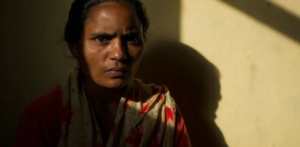In a recent ruling in X v. State of Telangana & Another, the Supreme Court of India made some shocking remarks. Justices B. Nagarathna and Kotiswar Singh stated that there is a “growing tendency” for women to misuse Section 498A of the Indian Penal Code (IPC)—a provision designed to protect women from cruelty in marriage—by using it as a tool for personal vendetta against their husbands and in-laws. While the judges clarified that women who have suffered cruelty should not remain silent, their observations risk perpetuating harmful stereotypes about women misusing the legal system.
In the said case, a woman filed an FIR in February 2022 alleging cruelty under Section 498A and dowry harassment under the Dowry Prohibition Act. The accused included not just her husband but also six members of his family. While the High Court rejected the husband’s plea to quash the FIR, it restricted arrests until the charge sheet was filed, as per established legal guidelines (Arnesh Kumar v. State of Bihar). However, the Supreme Court quashed the FIR against the husband and in-laws, citing she made vague and unsubstantiated allegations.
Police Efficiency vs Victim’s Intent
What is concerning is the broader narrative these remarks create. Based on decades of experience working with domestic violence survivors, we know that vague and omnibus allegations in FIRs are often a reflection of police inefficiency rather than the victim’s intent. Women frequently face insensitivity at police stations, where complaints are either dismissed outright or recorded haphazardly. Instead of holding the police accountable for poorly recorded statements, the Supreme Court appears to place the burden on the victim, suggesting that she should ensure her complaint is detailed and precise—a near-impossible expectation in a hostile system.
The Court also made troubling inferences about the absence of earlier complaints by the victim. The justices noted that she married in 2015 and had two children in 2016 and 2017, concluding that there was likely no harassment during this period. This assumption is not only baseless but ignores the reality that many women delay filing complaints due to societal pressure, lack of resources, or repeated attempts by authorities to counsel them into “settling” the matter. The absence of prior legal action cannot and should not be equated with an absence of violence.
The judges highlighted that the victim “abandoned” her two children, who remain in her husband’s custody. This assumption, too, is problematic. Women often face insurmountable barriers to seeking custody, including financial constraints, lack of legal support, and societal stigma. The Court could have considered the possibility that the victim was denied access to her children or made a painful choice to prioritise their stability.
Little Scrutiny Of Letter
Another aspect of the judgment raises serious concerns. The Court referred to a letter the victim allegedly wrote to the police in 2021, admitting she had left her matrimonial home after a quarrel about chatting with another man and promising not to “repeat such acts”. This letter, produced by her husband, was accepted at face value. Yet, anyone familiar with how women are pressured during “counselling” sessions at police stations knows the level of coercion they face. It is alarming that the Court did not scrutinise the circumstances under which this letter was written, especially in a case involving allegations of domestic violence.
Equally disquieting is the Court’s dismissal of the dowry allegations. Despite the victim’s claims of substantial dowry given at the time of marriage, the judges chose to focus on procedural issues and vague allegations rather than allowing the trial to proceed. By doing so, they missed an opportunity to reinforce the illegality of dowry—a deeply entrenched crime that claims the lives of 18 women every day in India, as per the National Crime Records Bureau (2022).
The judgment also framed the FIR as a retaliatory measure, filed after the husband sought a mutual consent divorce. This conclusion overlooks the reality that women often endure violence for years before taking legal action, with divorce threats serving as the final trigger. By framing her complaint as vengeful, the Court risks further discouraging women from seeking legal recourse.
Perhaps most glaringly, the victim was neither present nor represented during the proceedings. Given the systemic hurdles women face in accessing legal support, the Court could have ensured that she had the resources to present her case. Instead, it delivered a judgment that not only undermines her claims but also sets a dangerous precedent for future cases.
Justice Krishna Iyer once said, “A socially sensitised judge is a better statutory armour against gender outrage than long clauses of a complex statute.” Sadly, this case illustrates how far we still are from achieving such sensitivity in our judiciary.
How 498A Is Consistently Undermined
Section 498A, enacted nearly 40 years ago, remains an essential legal safeguard against domestic violence. Yet, its effectiveness is consistently undermined by narratives of misuse, despite overwhelming evidence of the prevalence of domestic violence in India. The National Family Health Survey (2019–20) found that 30% of women aged 18–49 had experienced physical violence since the age of 15—a staggering figure that translates to over 200 million women.
The growing trend of casual and contradictory statements made by Supreme Court judges regarding domestic violence must be addressed without delay. These remarks have a direct and significant impact on how both the police and judiciary respond to cases on the ground, potentially undermining efforts to protect victims and deliver justice. The judiciary must speak with greater compassion recognising the systemic barriers that prevent women from seeking justice.
(Audrey D’mello is the Director of Majlis, and Flavia Agnes is a legal scholar and women’s rights lawyer.)




